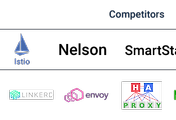오!! 여기 있는 것 중에 사용해 MSA로 가려면. Kafka, Pubsub, Redis 역시 생각이 거의 비슷해..
AUGUST 5, 2019 BY SEAN WILCOX

Retail IT professionals are under tremendous pressure. On one hand, competition from Amazon and evolving consumer behaviors are requiring the rapid delivery of complex, convergent, and immersive online and in-store shopping features. On the other hand, rising order volumes and the volatility of peak season make it difficult for IT organizations to plan for forecasted and unexpected spikes.
This is the reality every retailer faces in today’s modern commerce landscape. But why does this pressure even exist? Because the current retailer landscape is one where the business strategy and needs of the consumer have outpaced the technology capabilities of their present technology and software approaches. Traditional technology stacks struggle to effectively support the demands of the modern consumer, and that of New Retail.
This modern commerce reality is forcing IT organizations to rethink their present commerce strategies, technologies, and architectures. Based on our research, and engagement with many of the top retailers in the world, inventory availability and order optimization sit at the very center of these transformation efforts. Why? Because current order management systems (OMS) fail to optimize inventory and orders with the scale, modern architectures, and intelligence required to sufficiently power the experience business leaders and consumers alike want.
The migration from a dedicated, full-stack commerce architecture to a microservices-based architecture is a growing trend amongst retailers. Microservices are highly scalable, individual business logic and technology stacks (e.g., availability, pricing & promotions, catalog, etc.) that are independently developed, deployed and managed by a vertical team across the organization (e.g., Product, Engineering, UX, etc.). The team builds and exposes functional microservices through a call and response structure (e.g., APIs) to consumer applications requiring the service. Consumers can be any users of the information or intelligence that the microservice provides — from commerce websites and POS systems to WMS systems and even other Microservices. From an industry perspective, one of many terms gaining traction to explain this approach is headless commerce. Headless refers to anonymizing the front-end and focusing on horizontal microservices capable of serving any consumer system (front- or back-end). These efforts are emerging as the highest priorities within retailer business and IT organizations. Some of the key benefits propelling retailers to Microservices are:
- Continuous integration & deployments allowing for faster time to market of capabilities and features
- Tighter integration of business and technology teams (product models & DevOps)
- More immersive user experiences through deep contextual interactions exposed through APIs
- Scale and performance flexibility, and the ability to identify and remove bottlenecks in individual bloated stacks
- Lower cost to maintain through modern open-source technologies
- More modern architecture approach attracting talent with modern skillsets
But what is a proven technical approach used by retailers to realize these benefits? That’s what we summarized in this new best practices white paper: A Microservices Approach to Improving Inventory Availability and Order Optimization.
In this white paper, we’ve summarized the approach that top retailers and IT leaders in the industry are taking to address modernizing inventory availability and order optimization. We also discuss their best practices, which, we believe, companies should consider when trying to improve the performance of their commerce businesses (both technology architecture and sales).
The white paper is complimentary. So, download it and let us know what you think! We’d love to hear where you are in your Microservices journey.
Reference: https://yantriks.com/commerceclick/the-advantages-of-a-microservice-approach-to-modern-commerce/
'Fundamental > Design' 카테고리의 다른 글
| HDL(HIGH LEVEL DESIGN)의 형식 (0) | 2020.10.02 |
|---|---|
| Microsoft REST API Guidelines (0) | 2019.11.14 |
| Istio Service Mesh, the Step-by-Step Guide, Part 2: Tutorial (0) | 2019.08.08 |
| [중소기업청] 네트워크 보안성 생존성 고도화시스템 산업 로드맵 2013 (0) | 2015.02.03 |
| 기업홈페이지제작 자세히 알아보기 (0) | 2014.06.17 |

댓글